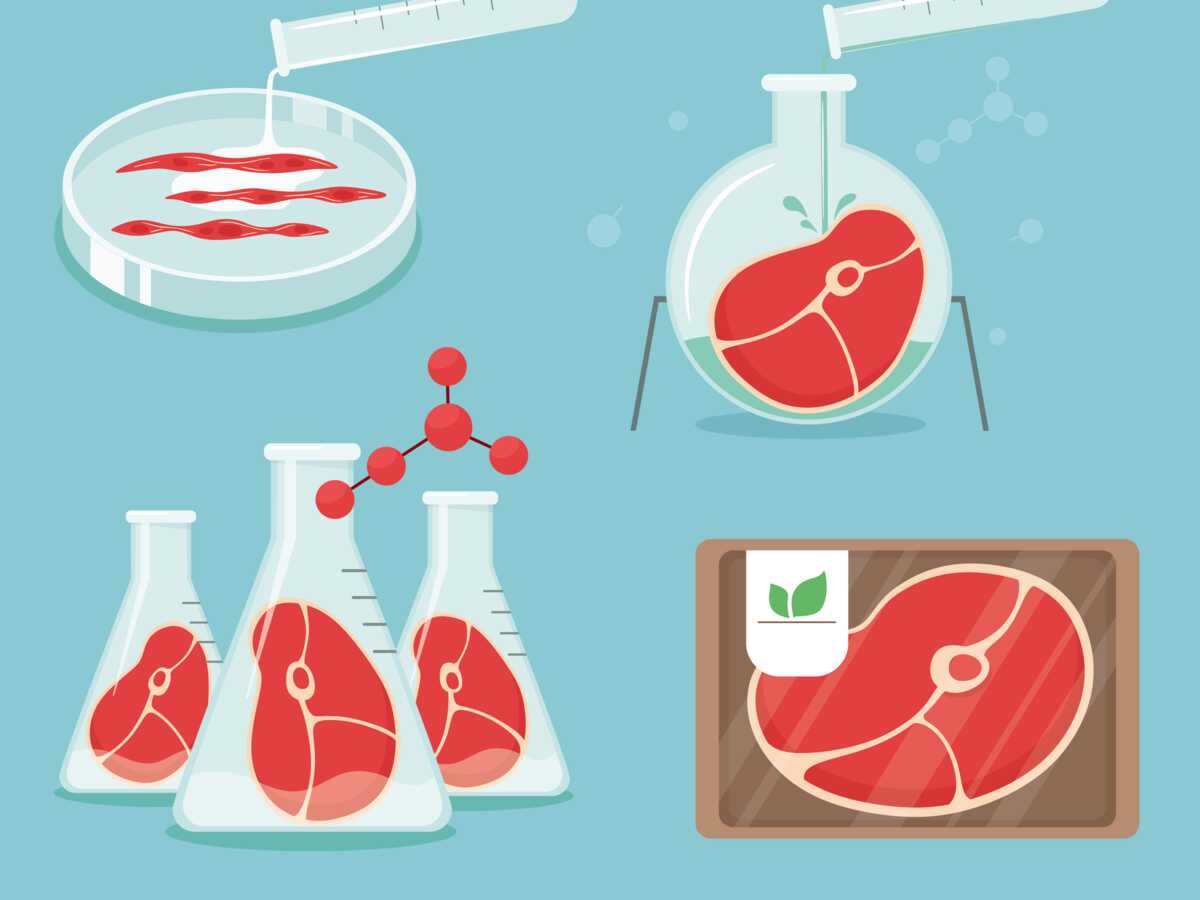Cellular, cultured, synthetic or in vitro meat : all the names are attributed to it since it does not yet have a legal name, not being authorized to be marketed in France. A restaurant in Singapore has, however, been offering the first nuggets made from cultured chicken cells on its menu since the end of 2020. And the first synthetic steak, born in Europe in the laboratory of the Dutch company Mosa Meat, is celebrating its tenth anniversary this year . More than a hundred start-ups around the world are currently working on the subject, including two in France: Vital Meat, which has been working since 2018 on products based on chicken cells integrated into processed products (nuggets, pizzas, salads, etc.) and Gourmey, created in 2019, which develops cultured foie gras and is preparing to launch a production workshop in Val-de-Marne. Last year, the government of the Netherlands invested 60 million euros to develop cellular agriculture, while across the Atlantic, the Californian company Upside Food obtained marketing authorization from the FDA ( Food and Drug Administration) at the end of 2022. The movement therefore seems to be accelerating…
A “chemical” product
Animal cells that multiply in bioreactors (culture tanks) do not produce meat but a cluster of cells. “We have only one type of cell, whereas in meat there are muscle fibers, collagen, fat, natural sugars… And all of this will give a particular texture and flavor to the cooking.” explains chemist Raphaël Haumont. It is therefore necessary to add to the mass of cultured cells colorings, texturizers and flavorings, to obtain an appetizing product. Chef Thierry Marx, co-founder with Raphaël Haumont of the French Center for Culinary Innovation in Paris-Saclay, indicates that “as it is a ultra-processed product, it tastes the way we want it to taste. I was able to taste Singapore nuggets and they really tasted like classic nuggets.”. Cellular meat can never have the appearance of a steak or a chicken leg, even if, as the chemist points out, “We’re only at the beginning, it will get better. Let’s remember the first plant-based steaks which were not great, whereas today we are able to make vegetable textures which are close to the fibers of meat”.
Questionable benefits
Promoters of cellular meat argue that it responds to many current issues: animal welfare, reduction of greenhouse gas emissions, elimination of the use of antibiotics in livestock farming and above all feeding nearly 10 billion animals. people in 2050… But regarding the environment, even if livestock farming emits a lot of CO2 and involves the production of cereals (often GMOs and imported) in large quantities, cultivating cells is not neutral either. It takes a lot of energy to heat the bioreactors and the scientific studies which attempt to measure the environmental impact of synthetic meat contradict each other, especially since for the moment there is no large-scale production. The question of the future of animals also arises: “grazing cattle and sheep maintain plant biodiversity and maintain the biodiversity microbial soil thanks to their droppings rich in organic matter” underlines Jean-François Hocquette
The French still reluctant to this synthetic meat
Given the millions invested in this sector around the world, we say that cellular meat could soon find itself on our plates. However, the inventors’ files must first be studied and validated by the European Food Safety Authority (EFSA). If Anglo-Saxon countries are rather open to new technologies, countries where traditional culture (and particularly culinary) is important are rather reluctant. “The French already have difficulty with the idea of eat insects and algae (good sources of protein), so not sure if they eat cellular meat” notes Raphaël Haumont. For his part, chef Thierry Marx is categorical, he will not use it: “we can feed people with intramuscular tubes, but they end up depressed. We need roots, history, poetry. Eating a steak in vitro is not like eating meat from our region, it is cultural and intellectual impoverishment.”.
And the nutritional value?
Little information is available because the companies that have launched into this innovative sector are still the secrecy of their manufacturing processes and the composition of their products. According to Jean-François Hocquette, who works on the subject “THE protein contents would be close to those of meat. However, there are doubts about the micronutrient composition : iron, zinc, vitamin B12… These could be added, it would then be necessary to ensure that they are well assimilated”. Others also criticize cellular meat being an ultra-processed product (industrial process, additives, etc.) which studies show are dangerous for health.
How is cellular meat made?
“Cell culture is already practiced in research laboratories, but on a small scale. To make meat in vitro, stem cells taken from an animal (beef, chicken, pork, etc.) are placed in a giant bioreactor with a culture medium whose composition is optimized so that they multiply. We know the principle but not the details of the processes of private companies. The in vitro steak marketed in Singapore is made in a culture medium which contains hormones and growth factors derived from fetal calf serum (which requires the slaughter of pregnant cows). However, most start-ups working on the subject indicate that they do not use fetal calf serum, without revealing the composition of their culture medium. Remember that in Europe the use of growth hormones has been banned in breeding since 1988.“
Thanks to Jean-François Hocquette, research director at INRAE (National Research Institute for Agriculture, Food and the Environment).
Read also :
⋙ Algae, insects, fake meat… What will we eat in 2050?
⋙ These foods that risk disappearing from our plates in 2050
⋙ Algae: 5 varieties to discover in the kitchen
